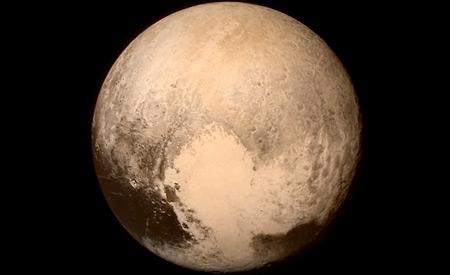For outside orbiters like Pluto, located approximately 4.88 billion kilometres away from Earth, a solar system can be a hard place to make a connection.
Former astronaut Robert Thirsk, and once a student of Powell River’s Grief Point Elementary School, can relate.
“It’s lonely up there,” said Thirsk, who holds Canada’s records for the longest space flight, 187 days, as well as the most time spent in space, just over 204 days.
But Pluto was brought a little closer to humanity last week as high resolution photos of the orb, slightly smaller than Earth’s moon, reached Earth from the New Horizons probe.
“We sent out a space probe not that much bigger than a baby grand piano,” said Thirsk. “We sent it out five billion kilometres to a pin point location where Pluto was going to be nine, 10 years after we launched the probe, and it all worked out...It’s great, not just the scientific aspect but the engineering aspect.”
NASA’s New Horizons probe was launched in 2006, almost in conjunction with Pluto’s loss of full planetary status that year. This change followed the discovery of other large bodies beyond Pluto.
“[Pluto] has always been that one that’s way out there, that no one really knew much about,” said Thirsk. “The best that we’ve been able to do prior…using the best telescopes, including the Hubble Space Telescope, is view it as a fuzzy spot.”
Having passed within 12,500 kilometres of Pluto and its largest moon Charon, the probe is so distant images beamed to computers on Earth can take over four hours to transfer.
Thirsk, chief astronaut of the Canadian Space Agency between 1993 and 1994, said he was surprised to see just how colourful Pluto is.
“It’s not just brown, not just grey, it looks like a mosaic,” he said. “It’s fascinating, it’s craggy, it’s icy, it’s got interesting patterns on it. It’s got mountains…I think it’s absolutely fantastic.”
Images sent to Earth from the probe show Pluto is home to a range of mountains, some, at 11,000 feet, comparable to Mount Waddington, 13,100 feet, the highest peak in the Coast Mountain Range.
“Go back four billion years in time and Earth’s natural history might have resembled what Pluto looks like today,” said Thirsk, describing what can be learned from New Horizons—which along with the two Voyager probes, is one of the farthest human-made objects from Earth.
After passing Pluto the probe is travelling toward a region known as the Kuiper Belt—a region of space densely packed with Pluto-like bodies, thought to hold remnants from the formation of Earth’s Solar System.
“By studying Pluto and Charon and the other objects we find out there in the Kuiper Belt, it’s like a look back in time at the beginnings of our solar system,” said Thirsk. “That’s kind of cool.”
In addition to Pluto, the Kuiper Belt also contains two other officially recognized dwarf planets: Haumea and Makemake.
Now chancellor at the University of Calgary and holder of an honorary doctorate from Vancouver Island University, Thirsk said Pluto still holds a place in his heart.
“I know scientifically Pluto is no longer categorized as a planet but it should,” said Thirsk. “In my heart it’s still a planet.”
To learn more about the New Horizons probe, Pluto and the Kuiper Belt, readers can go online.
Visit Mel Edgar’s blog Bits & Bobs for more of the Peak’s interview with Robert Thirsk.



